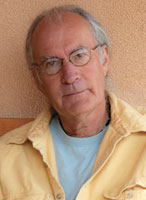The Last Kodachrome Frames

In this issue we feature images from the last roll of Kodachrome film ever processed. Steve McCurry’s work has always been admirable, but here the photographs have a special poignancy because they will be irrevocably tied to the end of an era in photography. These iconic images now reside in the Eastman House in Rochester, a fitting setting for them among the daguerreotypes, albumen prints, kallitypes, and other images created by processes that have become part of history. True, you can emulate the “look” of these processes with software, and even recreate some of the old paper print processes using custom-mix chemicals and old formulae, but I doubt very much that anyone is going to attempt to set up the massive machinery and chemical soups required to allow Kodachrome to be processed ever again.
Many of us grew up shooting film and have made the transition to digital, at first grudgingly and then, when the imaging industry began to get its act together, with some degree of enthusiasm for what this new form of photography offered. But all of us who shot film with some serious intent knew that for color film, and, for color slide film, Kodachrome was the way to go. Because of its unique formulation and dye processing the film offered a relatively stable base, at least in comparison with the poor lifespan of other color products.
Henry Wilhelm, in his groundbreaking The Permanence and Care of Color Photographs: Traditional and Digital Color Prints, Color Negatives, Slides, and Motion Pictures (which, by the way, is available for free download at www.wilhelm-research.com), points out the rather poor keeping ability of other films and how a whole generation of imagery was lost because of it. I remember Arnold Newman lamenting how much of his color work from the Fifties was lost because he shot it on the “wrong” film. I also have a photograph my father made on 4x5 Kodachrome of my brother and myself in the same era, which today is as rich as it was then. While some color film today is vastly improved in terms of longer-term stability, Kodachrome was unique in its class and many images that would otherwise be lost are still vivid today because they were exposed on it.
While I don’t want to stretch the analogy too far, I always felt there was something uniquely American about Kodachrome, brilliant color and stability combined, and of course the industrial infrastructure that created and sustained it, the engineers who designed and improved it and the company that manufactured it. The loss of Kodachrome is to me indicative of the diminishment of some of those other intrinsic qualities, and talents, and energy that we all miss. Right now we can look at these images, and at our own images made on this film years ago, and perhaps become more determined to re-instill in ourselves and in others the spirit that a small roll of film somehow embodied.

Image Tech: Only On www.shutterbug.com
Our website, www.shutterbug.com, has a new feature entitled Image Tech that contains web-exclusive tests on cameras, software, and lenses. This month’s Image Tech includes tests on:
• Leica M9-P
• Fujifilm Finepix X100
• Olympus E-PL2
• Canon EF 70-200mm f/2.8L IS II USM Lens
• Samsung NX11
• Pentax Optio WG-1 GPS
Plus: A special How-to on creating a book from your blog.
Visit www.shutterbug.com and click on Image Tech in the Nav bar, or simply type the name of the test item in the Search box. And please add your comments on the products, and our review.
- Log in or register to post comments

































